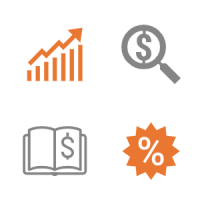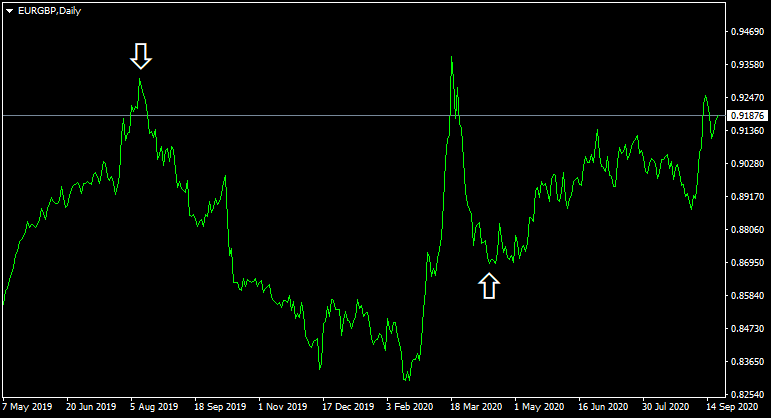Table of content
Many experienced professional Forex traders mention the importance of keeping a trade journal. This can be in the form of a physical journal or even an excel file, which records all trades the trader has executed over its trading carrier.
In order to maintain a trading journal the market participants have to keep track of the exchange rates, on which the positions were opened and closed, data of trades, profit or loss for each transaction as well as the amount of leverage used. In addition to that, some traders also add information about the strategies and indicators used in each trade.
The Forex trading journal can be helpful for traders in many ways. Firstly, it lets them identify their overall trading performance. Consequently, the market participants can know how much on average they are making or losing per month. This can be very helpful in informing traders about their progress over the extended periods of time.
Keeping a trading journal is also useful for market participants in a sense that it allows them to identify and learn upon their most common mistakes. Here they can find out which strategies and indicators performed poorly and replace them with techniques which have shown the better results.
Finally, by analyzing their trading journals, traders can identify those currency pairs and commodities, with which they had the best results. Consequently, they can try to improve the overall percentage of winning trades by focusing on those securities. Now let us go through the main elements of trading journals as well as some of its benefits in more detail.
What is a Trading Journal?
The trading journal keeps track of all executed trades on the trading account. The typical journal trading spreadsheet has several sections. Firstly, there is a column for the date of executing trades. Some market participants here also take note of the exact timing, however, for some traders this is very time consuming, so they just write down the date.
The second section shows the name of the currency pair or the commodity, followed by the type of position, either buy or to sell. This can be helpful for market participants to identify with which trading instruments they have the best and worst results.

The next column shows the amount of money invested in the trade, as well as the overall size of the position. If the market participant uses 1:1 leverage, then those two numbers will be equal. However, for a higher amount of leverage the overall size of position can be considerably higher than a trader’s investment into the trade. For example, if the market participant uses 1:20 leverage and invests $5,000 in the trade, then the total size of the position will be worth $100,000.
Another important section of the trading journal is the column which shows the price of opening the positions. It goes without saying that it will also include columns for the closing price of those securities. One can also find a trading journal template which also includes a separate section for the amount of leverage used for each trade.
This is followed by a column showing the total amount of gain or losses in pips and also in actual dollar amounts, or in whatever currency the market participant is using for its trading account.
Finally, it is worth mentioning that some traders also make additional trading journal entries such as the strategies and indicators used for each trade. This can be especially useful in the later analysis since it can help the market participants to identify their most common mistakes as well as their best performing trading techniques.
Here it is also important to point out that those traders who are using carry trade strategies on a consistent basis might add some additional sections to their trading journals, in order to make it more informative. Now, it is worth remembering that the carry trades involve borrowing in lower yielding currencies in order to buy higher yielding currencies and then earn a daily interest from the brokerage company, also known as swap or rollover, on those interest rate differentials.
Consequently, it is not surprising that those carry traders add additional columns in their Forex trading journal spreadsheet which includes the central bank interest rates for both of those currencies, which make up the given currency pair. If on the other hand, the market participant is dealing with commodities, say XAU/USD then one can simply put 0% in the XAU column and then write the interest rate of the US Federal Reserve in the USD column.
In order to make conducting future analysis much easier, the market participants can also add a section, showing a nominal interest rate differential between the two given currencies. This is a very important indicator for carry traders because it essentially determines the amount of daily income Forex traders receive from this type of trade.
It is also essential for carry traders to write down how much swap they receive from the brokerage company on a daily and annual basis. Those sections can be very handy when analyzing and comparing the relative profitability of each carry trade.
With all of those pieces of information at hand, the market participants are well-positioned to conduct a productive analysis, which can certainly help them to improve their trading performance in the long term.
Practical Example How to Keep a Trading Journal
So far we have discussed the important components of creating a trading journal. However, the obvious question here is: how can a trader go about it in real life? Well, in order to illustrate one of the examples, let us take a look at this daily EUR/GBP chart:

As we can see from the above image, in early 2019, the Euro was in a solid upward trend before reaching a peak of 0.93 by August of the same year. Now, let us suppose that at this point a market participant has decided to open a carry trade, by selling the EUR/GBP currency pair at that time. Let us further suppose that as the Bank of England lowered the rates, the market participant has decided to close the position in April 2020.
So how can one record those transactions? Well, let us go through each section one by one:
- Date of opening position: 12/08/2019
- Currency pair: EUR/GBP
- Position: Sell
- Amount Invested: $10,000
- Size of Position: $100,000
- Amount of leverage: 1:10
- Opening exchange rate: 0.93
- Date of closing position: 14/04/2020
- Closing exchange rate: 0.87
- Gains/losses in pips: + 600
- Gains/losses in USD: + $6,895.65
- The interest rate of carry trade currency: 0.75%
- The interest rate of funding currency: 0%
- Nominal interest rate differential: 0.75%
- Effective broker commission: 0.1%
- Daily swap, paid by the broker: $1.78
- The estimated total annual amount of interest earnings: $649.70
So as we can see here the list of entries is quite long, however, it does contain all of the pieces of information one might need in the later analysis. In this case, the trade turned out to be quite successful. This is because the market participant has not only benefited from the daily interest payments from the broker but also made the overall profit after closing this trade.
Stock Trading Journal
It goes without saying that the Forex market traders are not the only ones who can potentially benefit from keeping the trade journal. For those market participants who are trading stock, the journal entries will be different in many ways.
Firstly, it is worth noting that one thing which will remain unchanged is the dates of trades. This is an important item to have since it helps the market participants to categorize their trading activities by different timeframes.
The name of the currency pair or commodity will be replaced by the name of the actual stock. Many people might also decide to add the ticker symbol of the stock to its name, in order to make identification as easy as possible.
Since the majority of investors trade stocks without leverage, one can only have one column showing the originally invested amount, so there is no need to have an additional section for the size of the position. Just like in the previous case, trades will also need to have a profit and loss section in the trading journals.
Obviously, there are no carry trades in the stock market. Consequently, the market participants can instead add columns showing the annual or quarterly dividend amount for the stock. In addition to that, some people might find it handy to have a separate column showing the effective dividend yield of the stock.
Ideally, the best trading journal for the stock market will also include sections for the EPS, the earnings per share indicator of the stock, as well as the price to earnings ratio, also known as the P/E ratio. Those indicators can prove to be handy tools in the process of stock valuations.
Benefits of Keeping a Trading Journal
Now that we have gone through the basics of the trading journal, it might be helpful to discuss some of its benefits and disadvantages. Now, the one reason why many traders are not keeping trading journals is that it can be time consuming. The fact of the matter is that many traders do have to spend hours analyzing charts, going through the latest news releases, and planning trades.
Consequently, keeping a trading journal can represent an additional unnecessary burden for them. The argument usually goes as follows: traders can just use the time they have to write a trading journal, do more research, and plan better trades. In addition to that, it is worth noting that for many market participants keeping a trading journal can simply be a very boring task, not nearly as interesting as planning and execution of new trades.

This is especially true with scalpers and day traders. Here it is worth pointing out that those types of traders usually execute dozens of trades per day. Consequently, writing down all of those details for so many trades can be rather an exhausting task and consume a lot of time. Therefore, those types of market participants might be most resistant to keeping a trading journal.
It goes without saying that despite some of its disadvantages, trading journals do have a number of benefits. Firstly, the trading journal allows market participants to measure their trading performance. It is very difficult for traders to determine whether or not they are making any progress when they have no idea about the overall percentage of winning trades or the total amount of earnings or losses during the month.
Therefore, when traders do have a trading journal in excel, or in another form, they can always take a look at making necessary calculations in a short period of time.
This can be especially useful for those market participants who are still using demo accounts and are not sure whether or not they are ready to move on to the real trading accounts. What they can do here is to take a look at their trading journal and calculate whether or not they are making net profits on a monthly basis.
If that is not the case and the trader still suffers losses, then it might be too early for him or her to start trading with real money. On the other hand, if one already makes some profits and improves his or her results over time, then it might be a sign that the trader is ready to move on to real trading accounts.
It is also helpful to mention that trading journals allow traders to analyze the currency pairs and commodities with which they had the best result and also single out the ones where they had the most losses. Consequently, what traders can do is to focus more on those currency pairs and commodities with which they had the best results.
Finally, the market participants can also use their trading journals for identifying and learning from their mistakes. Here they can find out which strategies and indicators have failed in the past so that they can either modify them as necessary or discard them entirely.
Keeping a Trading Journal – Key Takeaways
- A trading journal is an excel file or a physical notebook, which tracks details of all trades a trader executes on a daily basis. It includes the information about the currency pair or the commodity which is involved in trade, the type of position, the price of opening and closing the trade, as well as the profit or loss per trade.
- Some market participants do not keep a trading journal, because they might find it as an unnecessary tiring task. This is especially true for scalpers and day traders, who make dozens of trades per day and have a lot of things to write down if they want to keep a trading journal.
- Keeping a trading journal has several benefits. Firstly, it allows the market participants to measure their trading performance on a regular basis. In addition to that, this tool helps them to identify those pairs and strategies they had the most success with and also to discard those techniques and indicators which failed them in previous trades.



